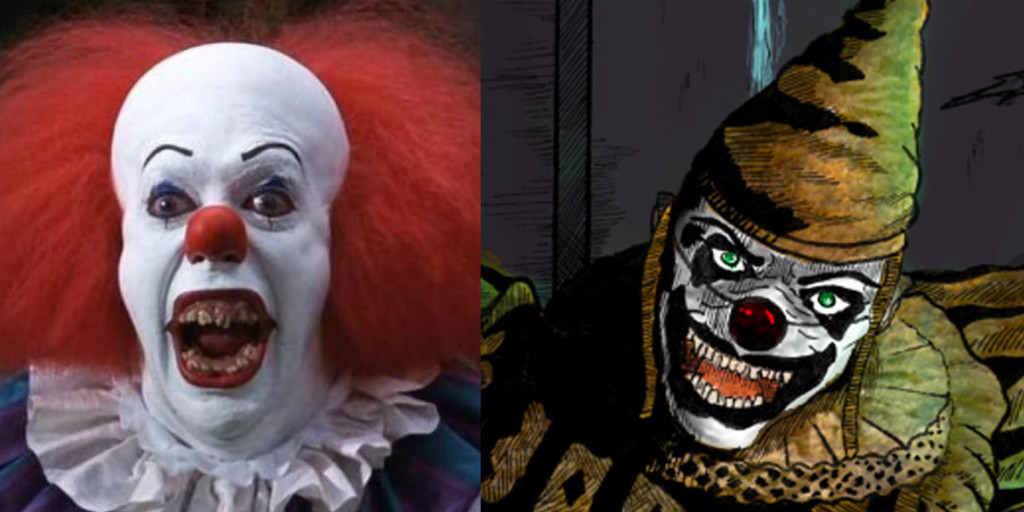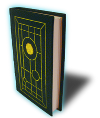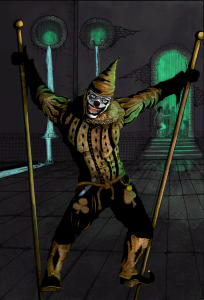Did Stephen King Rip Off the Idea of Pennywise the Clown in “It” from Author Tim Powers?
There are some striking similarities between the clown Stephen King created for his novel, It, and a clown villain found in a book by author Tim Powers. 🤡 Did King co-opt the idea for his book and character from Powers, or is this merely some coincidence? Read on and you’ll see what I mean.

Stephen King’s Pennywise the Clown from IT, versus Tim Powers’ Horrabin. (Tim Curry as Pennywise on the left, and Horrabin detail illustration by artist Thaxssillissia on the right.)
In 1983, a Fantasy novel by Tim Powers was published called The Anubis Gates. This was something of a seminal work by Powers, and the novel was rapidly successful. It was a fascinating, heady mix of time travel, wherein millionaires used time-travel portals to go back to 1810 in order to attend a lecture by the famous Romantic era poet and author, Samuel Taylor Coleridge. The millionaire party had taken with them a literary professor named Brendan Doyle to provide commentary, and the professor becomes the novel’s protagonist. He becomes marooned in the 19th century, pursued by some malevolent magicians that had created the time-travel portals (called the Anubis Gates).
While writing A Comprehensive Dual Bibliography of James P. Blaylock & Tim Powers, I came to realize that one of the evil magicians in The Anubis Gates shares some distinct characteristics with Pennywise the clown in It.
The evil magician is a master of a guild of street beggars — there are some passing similarities to the character of Fagin from Charles Dickens’ book, Oliver Twist. This magician is named “Horrabin”, and he spends much of his time under the streets of London, in the sewers, as well as in abandoned buildings taken over as lodging places by his beggars. Obviously, as a magician, he has some level of supernatural powers.
Strangely, Horrabin dresses as a clown, which renders him all the more awful. There’s no clear answer as to why he chooses to dress up as a clown. Perhaps it’s to initially belie that he’s a criminal, or to initially lure children into his clutches where he may exploit them.
It virtually goes without saying, but Horrabin is depraved and evil. He has collected a crowd of children to use as beggars to profit from. He practices vivisection upon them — that is, surgery without anesthetizing — in order to disfigure them and make them more awful to elicit pity from people in London, so that they will pay the beggars more.
So you see, Pennywise and Horrabin have a few similarities. Both are evil. Both are done up as clowns, perhaps to first confuse children into coming nearer to them. Both have supernatural powers. Both live down in the sewers below their cities from where they may emerge to get children. Both apparently delight in causing pain and fear in children.
There are some other, more tenuous parallels between Stephen King’s It and Tim Powers’ The Anubis Gates. In a sense, It is a bit of a time travel story just as The Anubis Gates is. The novel version of It starts out in the 1950s, and then fast-forwards 27 years to the 1980s when Pennywise returns to haunt the town. While not precisely a time travel story, the events of the main characters’ childhood pasts inform them about the reemerging evil, and their memories allow them to fight it.
A little larger parallel, however, is the form of some of the monsters found in both books. The Anubis Gates involves some magic of old Egyptian gods, calling to mind thoughts of mummies, while in It, Pennywise takes the form of a mummy to terrorize one of the children. One character found in The Anubis Gates is Dog-Face Joe, a werewolf, and this is the monstrous form Pennywise assumes to terrorize yet another child in It.
Admittedly, the connections between the two books are fairly few. But, the strongest parallel is in terms of the two supernatural, evil clown creatures. I haven’t done a survey of all stories with supernatural, evil clown villains preceding It, but I believe there to be relatively few. There are a few movies involving evil clowns leading up to the publication of It, although not having the mixture of supernatural powers, plus evil, plus sewer-dwelling clown villains. But, It, and the TV miniseries based upon it seem to’ve inspired and influenced a great many other horror stories involving clowns. Pennywise has become iconic, and he is the poster child for the scary clown trope.
Of course, the real-world clown villain could have inspired either Powers or King to model a villain as a clown. John Wayne Gacy was known to dress up as “Pogo the Clown” to appear at various events — Gacy is infamous for murdering around 33 teenage boys and young men in the 1970s. Once his crimes were uncovered, the media nicknamed him the “Killer Clown”.
So, what does Stephen King say about inspiration for the iconic clown? King has said before that he “doesn’t know where he gets inspiration”. In a few interviews, however, he’s related that he was once seated on an airplane next to a drunken man who was dressed up as Ronald McDonald, the mascot clown of McDonald’s restaurants. It makes for a great interview story, and he gives enough details to believe it truly happened. But, was that clown the only inspiration for Pennywise? In other interviews he has said that he initially intended the creature in the sewers to be a troll, like the monsters that stake out bridges for their territory in old fairy tales. While developing the book, however, he eventually turned the demonic creature into the clown.
Stephen King is apparently also a voracious reader, sometimes reading a few books per day. He has sometimes recommended reading to aspiring writers as a source of inspiration, too. It’s quite conceivable to me that King could have picked up a copy of Powers’ book shortly after it was released, found the description interesting, and read it through. The Anubis Gates is a sort of “secret history” creating a compelling story in between the known facts of literary history of the Romantic era, and chocked full of details of old London that entrance. The book remains very popular, and it was reprinted and rereleased under many subsequent editions.
My musings here are certainly conjecture, and correlation definitely does not equate with causation. I’m also not at all accusing Stephen King of plagiarism of Tim Powers. The two books are quite distinct, and the use of the supernatural, evil clowns that live in sewers and victimize children is to different purposes. Each of the books comprise unique and interesting stories. It’s also not unusual in creative endeavors for one piece of art to inspire an artist to do another. “Appropriation” has sometimes been used to describe imitation of artistic elements in a criticizing manner, but the truth is that artists have riffed off of one another’s works across the entire history of time, and there should be no shame involved with that.
I could easily be wrong — there are instances where similar story elements arise among writers independently. John Wayne Gacy had already established that clowns could be evil creatures dressed up to trick and lure innocent children into danger, and fear of clowns, i.e. “coulrophobia”, is a fairly common condition that both writers could have tapped in order to infuse their characters with the ability to inspire fear and horror.
Considering the timeline of The Anubis Gates predating It by a few years, though, and the intriguing similarities of the clown figures in both novels, I’m inclined to think that Stephen King did indeed read Tim Powers’ book before he wrote It, and the striking, archetypal clown villain lingered in a shadowy corner of his brain to later emerge from his pen onto the pages of his book.
Have you read both books? If so, what do you think?
Comments
Trackbacks
There are no trackbacks on this entry.








This is utterly frocking ridiculous. There is no way you could read these two books and come away with the idea that one inspired the other unless you were a complete gibbering moron.
So, you can clearly see that I did not at all say that one book inspired the other — the stories are distinct.
However, I did say that one monstrous clown villain could have inspired the other — and, I outlined the parallels.
Don’t you see that there are indeed parallels between the two characters?!? Doesn’t the set of coincidental parallels lead you to wonder if one helped form the seed idea for the other?